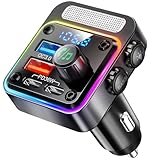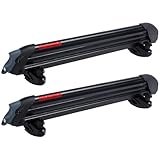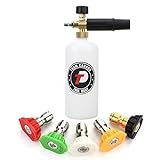Where is the OBD2 Port on a Dodge Ram 1500: Unveiling the Hidden Location

If you’re a Dodge Ram 1500 owner, chances are you’ve glanced at that dashboard and wondered about all the hidden ports and connectors tucked away beneath it. One of the most essential yet elusive features in your truck is the OBD2 port. It’s not just another plug—it’s your gateway to understanding the health of your vehicle, diagnosing engine problems, and even monitoring performance in real-time. Whether you’re a seasoned DIY mechanic or just a curious owner wanting to know more, uncovering the OBD2 port can save you both time and frustration.
In This Article
Understanding the OBD2 Port
Before diving into the exact location of the OBD2 port on a Dodge Ram 1500, it’s crucial to understand what this little port actually does. OBD stands for On-Board Diagnostics, and the OBD2 is the second-generation standard found in vehicles manufactured after 1996. Think of it as a translator between your truck and the tools you use to read it.
When you connect an OBD2 scanner or code reader to your vehicle, it communicates with the truck’s onboard computer. This lets you pull error codes, monitor engine performance, check emissions, and even track real-time data like fuel efficiency and RPMs. Imagine having a window into your truck’s brain, showing exactly what’s working perfectly and what might need attention. For a Dodge Ram 1500, which is built for both performance and reliability, this port is a game-changer.
Why the OBD2 Port is Vital for Dodge Ram 1500 Owners
Some people overlook the OBD2 port, assuming it’s only for mechanics. But the reality is, it’s one of the most practical tools for proactive vehicle care. Here’s why it matters:
-
Diagnose Engine Issues: A flickering check engine light can be alarming. With the OBD2 port, you can quickly identify if it’s a minor sensor issue or something more serious.
-
Monitor Vehicle Performance: From fuel efficiency to coolant temperature, the port allows you to track your truck’s stats in real-time. This is especially helpful if you’re towing heavy loads or driving long distances.
-
Reset Fault Codes: After repairing an issue, the OBD2 port lets you clear error codes, turning off that persistent check engine light.
-
Emission Compliance: In many states, emission tests require access to this port. Being familiar with its location ensures a smooth inspection process.
Think of it as having a personal diagnostic tool that keeps your truck running smoothly, prevents minor problems from becoming costly repairs, and ensures your Dodge Ram 1500 stays roadworthy.
Locating the OBD2 Port on Your Dodge Ram 1500
Now, the million-dollar question: where is the OBD2 port on a Dodge Ram 1500? The good news is, it’s designed to be accessible, but it’s hidden just enough to avoid accidental tampering.
For most Dodge Ram 1500 models, the port is located under the dashboard on the driver’s side. It’s typically near the steering column, tucked just above the footwell. Here’s a simple step-by-step approach to finding it:
-
Sit comfortably in the driver’s seat and face the dashboard.
-
Look under the lower portion of the dashboard, near where your knees would be while driving.
-
You may notice a small rectangular cover or plastic panel—this is often concealing the port.
-
Remove the panel gently using your fingers or a flat-headed screwdriver.
-
Behind the panel, you will find the OBD2 port, ready for your scanner or diagnostic tool.
It’s important to note that the exact placement can vary slightly depending on your model year. Older or newer generations of the Ram 1500 may shift the port a few inches to the left or right, but it almost always remains under the driver-side dashboard.
Tips for Using the OBD2 Port Safely
While finding the port is straightforward, using it effectively requires some care. Here are a few practical tips:
-
Always turn off your truck before connecting a scanner to prevent electrical issues.
-
Avoid forcing connectors—OBD2 plugs are designed to fit snugly but smoothly.
-
Keep the area clean; dust and debris can affect connection quality.
-
Use trusted scanners compatible with Dodge Ram 1500 software versions to get accurate readings.
By following these tips, you ensure that your diagnostic efforts are safe, effective, and won’t harm your truck’s electronic systems.
Real-Life Scenarios Where Knowing the OBD2 Port Helps
Picture this: You’re on a weekend camping trip, towing your boat with your Dodge Ram 1500. Suddenly, the check engine light flickers on. Instead of panicking or calling a tow, you pull out your OBD2 scanner, connect it to the port, and instantly retrieve the fault code. Within minutes, you know it’s a minor sensor issue—nothing serious. You reset the code, continue your trip, and avoid a costly roadside delay.
Another scenario is during routine maintenance. Mechanics can quickly access the OBD2 port to check your truck’s system before servicing it. This not only speeds up the process but ensures any potential problems are addressed before they escalate.






